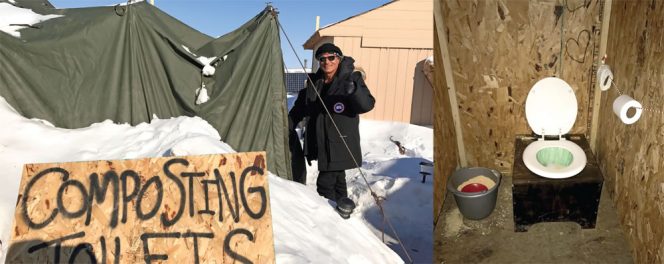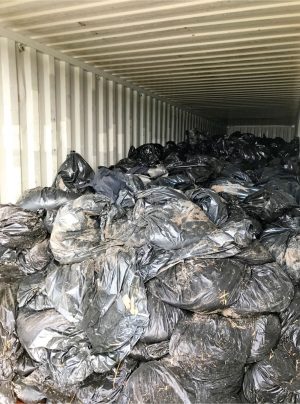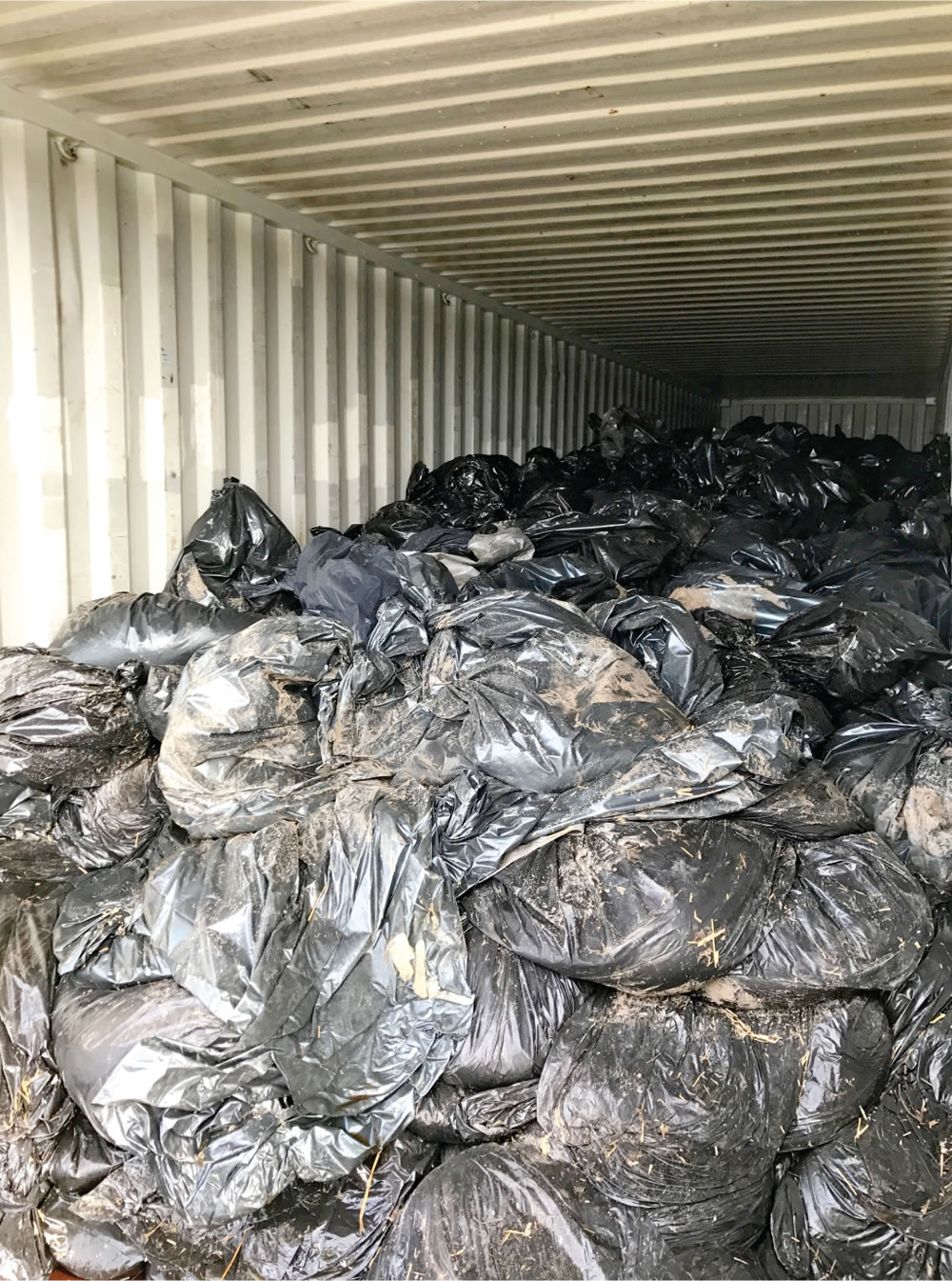Marsha W. Johnston
BioCycle September 2018
Givelove is a nonprofit organization that trains communities worldwide in safe sanitation and composting. Its program director, Alisa Keesey, received a call in November 2016 for help to address what was rapidly becoming a sanitation emergency at the Oceti Sakowin Prayer Camp in Standing Rock, North Dakota. The temporary camp was the site of the Standing Rock Sioux Tribe’s nearly year-and-a-half protest against the Dakota Access Pipeline. The Tribe was worried that the Dakota Access Pipeline (ultimately given the green light by the Trump Administration), which runs under the Missouri River close to the Reservation, would destroy sacred sites and negatively impact the drinking water.

Composting toilets were fitted with 5-gallon BioBags® (right). They were housed in tents that required round-the-clock lighting and heating (below). Photos courtesy of GiveLove
Keesey, who won the U.S. Composting Council H. Clark Gregory Award in January 2018 for outstanding grassroots efforts to promote composting during her 25 years of international development work, says the Standing Rock Compost Toilet project is the one that makes her most proud. “It was the largest communally managed compost toilet system ever attempted,” she says. “Just the sheer magnitude of the problem and how many people came together to fix it.” GiveLove’s partners in the project were the Sioux Tribe, Native Children’s Survival and Protectors Alliance. The Alliance ran a “gofundme” page that raised $90,000 in two weeks for building the toilet blocks and the project’s operations.
Tackling The Problem
GiveLove developed a “Plan A” to retrofit 5 U.S. Army tents with interior stalls and 110 compost toilets, and to build a composting facility in a Quonset hut that would have been somewhat serviceable in winter. The Standing Rock Tribal Council approved the plan, and thanks to being under the sovereign jurisdiction of Standing Rock EPA, the emergency project benefitted from an expedited permitting process.
The highly militarized operating conditions included the threat of being shot at with rubberized bullets, cell phone jamming, roadblocks, aerial surveillance, and a local non-native Bismarck community mostly hostile to, or actively fighting, the Standing Rock protest. Furthermore, the Tribe feared that authorities would shut down the camp if there was no sanitation plan, according to Keesey. As a result, “we declined all interviews about the toilets while on site because we were afraid the project would be sabotaged and we didn’t want to be shut down.”
Almost as soon as Plan A implementation was underway, circumstances began throwing curveballs. First, GiveLove had to go live much sooner than expected because the porta-potty company came early and began pulling out the toilets, says Keesey. Construction of wooden “Lovable Loo” composting toilets and retrofitting the Army tents with interior stalls began in earnest. After building over 100, the first of many blizzards arrived, and the team realized it would not be able to use them all, as navigating in the large camp was almost impossible. So the toilets were consolidated within three tents. In addition, by the time the blizzard and subzero temperatures arrived, the camp population dwindled to less than 2,000 people.
The toilets were fitted with 5-gallon BioBags®; packaged pine shaving horse bedding was used in the toilets to control odor. “It had to be a completely waterless system in these conditions with no urinals or hand washing, because the water would freeze solid,” Keesey explains. “People surviving in that camp had blazes in their yurts and teepees to keep their food from freezing. It was an extreme environment.”

Filled bags were put in 55-gallon black contractor bags and stored in 40-foot shipping containers. Photo courtesy of GiveLove

Composting was done in two 40-foot by 10-foot straw bale bays reinforced with rebar. The bags were punctured and layered, then covered with rotting silage and straw. Photos courtesy of GiveLove
When the bays were ready, the crew, wearing hazmat suits, set out to empty the frozen toilet material from the BioBags. “As we had never composted with BioBags, we tried to empty them, but there were thousands, so we ended up just perforating them with pitchforks,” she adds. “Most were put into the bays frozen.” A dump truck then drove into the bay to layer rotting silage and straw acquired from local ranches on top of the perforated bags. Within an hour of finishing on March 11, the winter weather came back, and covered the composting site in snow.
The composting clock started in April, but because of the long winter, GiveLove extended its normal 12-month curing phase to 18 months, and plans to harvest the compost later in 2018 when it can get back to Standing Rock. Preliminary tests of the compost were done in April 2018 (the 12-month mark) by Soil Control Labs in California, and the samples tested pathogen-free. Further, Keesey notes, all the BioBags were 100 percent disintegrated. GiveLove plans to do additional testing at the end of the summer before the compost is used in a tribal ceremony to honor the water protectors at Standing Rock by planting indigenous trees such as chokecherry.
Marsha W. Johnston, an editor with Earth Steward Associates, is a Contributing Editor to BioCycle.










